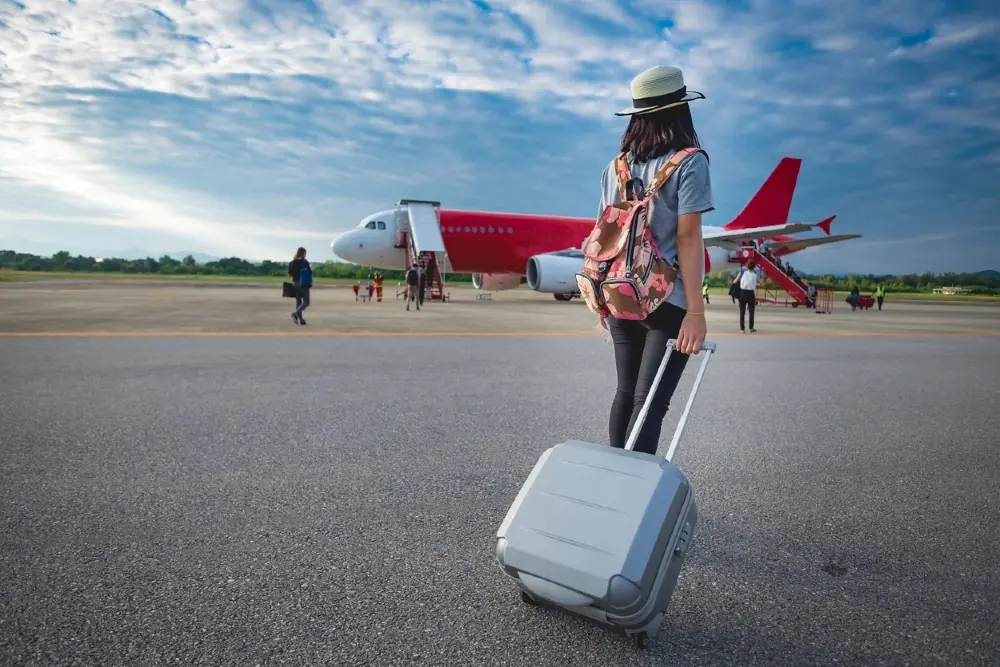I’ve spent the past decade crisscrossing the Caribbean — from reggae-filled streets of Kingston to quiet fishing villages in Saint Lucia — and I can tell you one thing: paradise isn’t always as carefree as the brochures suggest. Behind the turquoise waters and all-inclusive resorts, some islands face serious challenges, from rising crime rates to hurricane damage that impacts infrastructure and safety.
That’s why I’ve created this in-depth guide to the top 10 most dangerous Caribbean islands for tourists. My goal isn’t to scare you off — the Caribbean remains one of my favorite regions in the world — but to arm you with insider knowledge so you can plan smarter, get tourists tickets, stay safer, and actually enjoy the beaches, music, and culture that brought you here in the first place.
Whether you’re dreaming of strolling down Cable Beach in Nassau, hiking Gros Piton in Saint Lucia, or exploring Old San Juan, knowing the risks will help you avoid trouble. Over the years, I’ve worked with local guides, police officers, and even hotel security managers to understand where danger is real, where it’s exaggerated, and how to travel with confidence.
How We Ranked the “10 Most Dangerous Caribbean Islands”
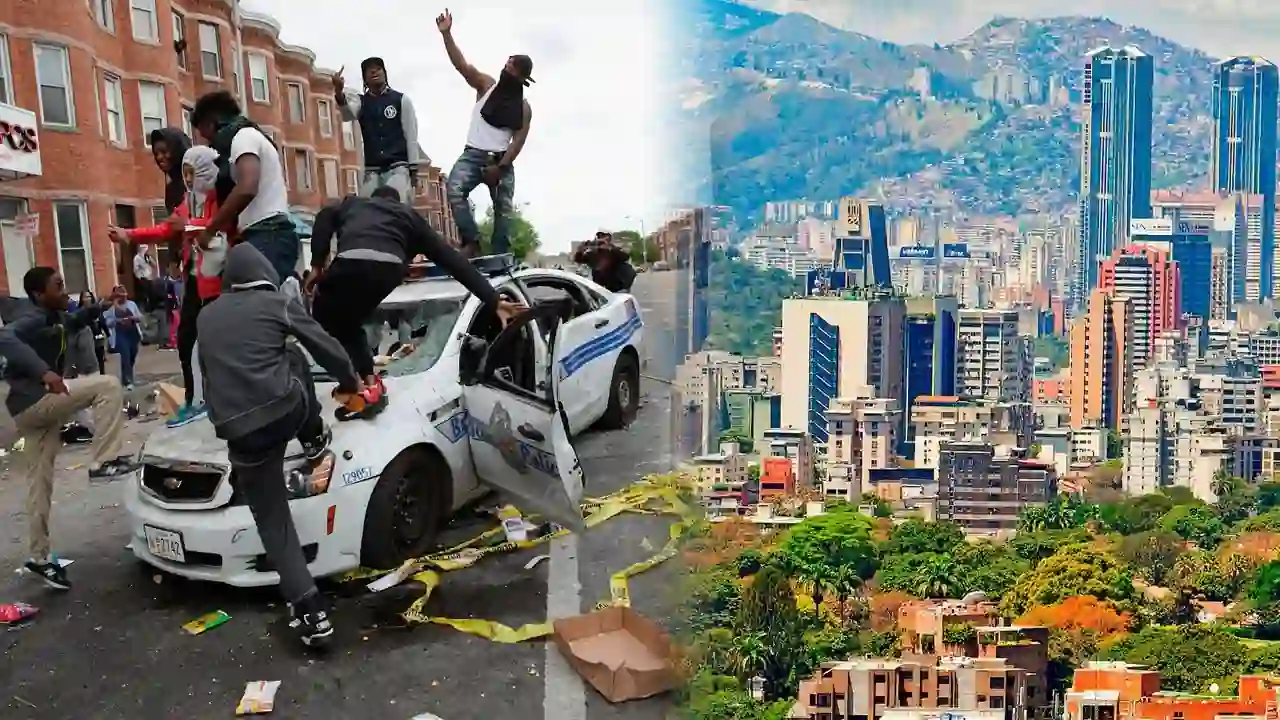
Before we get into the list, let’s talk methodology. This isn’t just a random roundup of scary headlines — I’ve personally visited all of these islands (some of them multiple times), and this ranking reflects a mix of on-the-ground experience, government advisories, and local crime statistics.
Here’s what I considered:
- Crime Data: I reviewed local police reports, U.S. Department of State travel advisories, and the Caribbean Island Safety Index 2025. In some places, violent crime is concentrated in specific neighborhoods — I make that distinction so you know what’s safe vs. what’s not.
- Tourist-Specific Risks: Pickpocketing, hotel thefts, carjackings, and scams targeting foreigners carry more weight than general crime.
- Political & Social Stability: Islands facing gang-led turmoil or civil unrest are ranked higher for risk. Haiti is a prime example — I’ve had to cancel trips there twice because of Level 4: Do Not Travel advisories.
- Natural Disaster Risk: The Caribbean lies in the hurricane belt. I factored in hurricane frequency, evacuation readiness, and recovery speed. Hurricane Rafael in 2012 taught me firsthand how quickly travel plans can change.
- Health & Infrastructure: Access to hospitals, clean water, and reliable transportation can make a huge difference if something goes wrong.
One important note: even on the “most dangerous” islands, there are safe areas. Most crimes never affect tourists — but knowing which areas to avoid, when not to wander, and how to blend in can dramatically reduce your risk.
1. Jamaica – High Crime in Tourist Hotspots

I’ve been to Jamaica four times, and each trip taught me a new lesson about staying street-smart. The island’s energy is intoxicating — reggae beats in Montego Bay, jerk chicken sizzling by the roadside, and waterfalls like Dunn’s River Falls that are postcard-perfect. But Jamaica consistently ranks high among the top 10 most dangerous Caribbean islands, especially when it comes to violent crime.
What Makes It Risky:
- Gang Activity: Much of the crime is linked to organized gangs in Kingston, Spanish Town, and Montego Bay.
- Tourist Hotspot Crime: Petty theft and robberies do happen, even in popular areas like Hip Strip in Montego Bay.
- Travel Advisories: The U.S. Department of State currently lists Jamaica at a Level 3 – “Reconsider Travel” due to crime.
When I stayed in Montego Bay last year, my local guide warned me not to walk outside the resort at night. Even during the day, I kept valuables minimal — just a copy of my passport, a few Jamaican dollars, and my phone tucked away.
Pro Tip: Stay in well-rated resorts with private security and controlled access for added safety. Use registered taxis and avoid questionable neighborhoods like Cassava Piece in Kingston.
| Risk Level | Main Cities to Avoid at Night | Safety Advice |
| High | Kingston (West), Spanish Town | Stick to guided tours, avoid traveling solo at night |
| Medium | Montego Bay, Negril | Stay in resort areas, use hotel shuttles |
| Low | Ocho Rios, Port Antonio | Generally safe but still watch for pickpockets |
Despite these risks, Jamaica is still worth visiting — just be aware and plan smart.
2. Trinidad & Tobago – Gang Activity & Kidnapping Risks
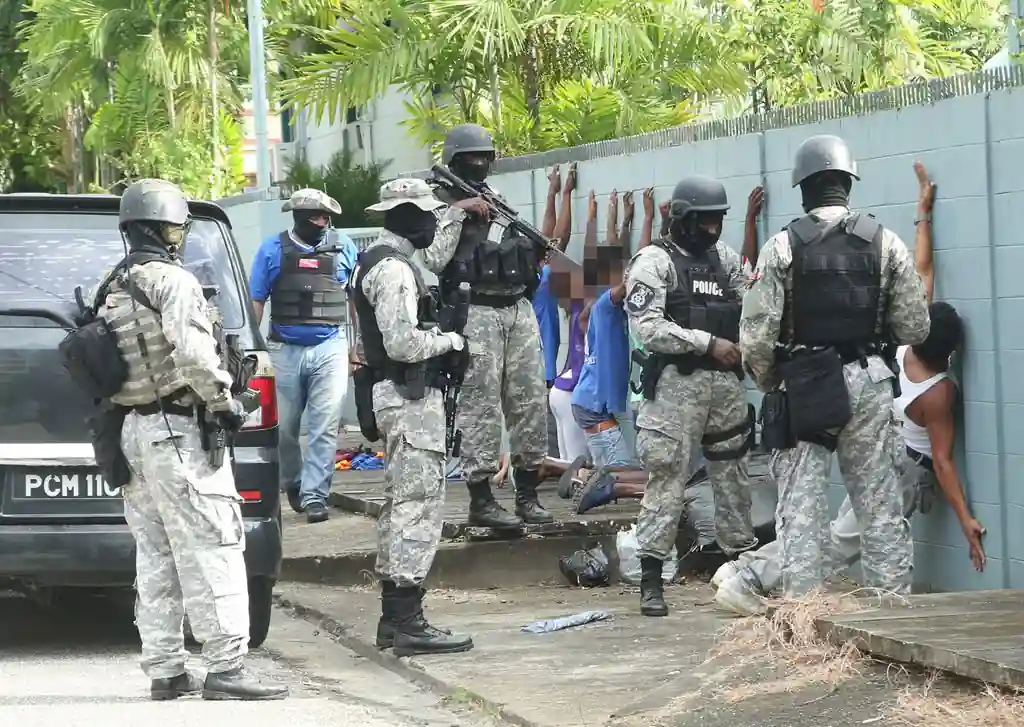
During my last trip to Port of Spain, I could feel the tension in certain neighborhoods. Trinidad & Tobago is one of the region’s economic powerhouses, famous for Carnival and rich cultural life, but it also struggles with gang-related violence, kidnapping, and drug trafficking.
Crime Snapshot:
- Gang Hotspots: Laventille and Morvant in Port of Spain are notorious for shootings and turf wars.
- Kidnapping for Ransom: While less common than in the early 2000s, incidents still occur — especially involving wealthy locals or business travelers.
- Petty Crime: Bag-snatching, ATM skimming, and car break-ins are the most common issues tourists face.
The government has tried anti-crime efforts, including more police presence during Carnival, but locals I spoke with admitted that robberies still spike during large events.
Traveler Safety Tips: Stick to main Carnival routes and avoid backstreets to stay safe—learned this when a local security guard turned me back. For late-night travel, use hotel transport instead of public maxi taxis, and avoid walking in Port of Spain after dark.
| Risk Factor | Safety Level | Insider Tip |
| Violent Crime | High | Stay in St. Ann’s or Woodbrook neighborhoods for safer accommodation |
| Petty Theft | Medium | Keep cash split between pockets, avoid flashy jewelry |
| Kidnapping | Low for tourists | Stick to busy, well-lit areas and pre-arranged transport |
If you love nature, Tobago is the safer bet — its beaches like Pigeon Point are stunning and crime rates are much lower.
3. Puerto Rico – Rising Crime & Natural Disaster Concerns

Puerto Rico has always been one of my favorite Caribbean destinations — Old San Juan’s colorful streets, El Yunque rainforest, and endless stretches of beach are incredible. But in recent years, I’ve seen why Puerto Rico often makes the top 10 most dangerous Caribbean islands for tourists lists.
Crime & Safety Risks:
- Carjackings: Particularly in San Juan and along major highways.
- Robberies: I once had a rental car broken into in Condado — a common complaint from other travelers.
- Drug-Related Violence: Mostly gang-on-gang, but can spill into tourist areas at night.
Puerto Rico is also in the hurricane belt, and I experienced this firsthand during Hurricane Maria’s aftermath — power outages, limited medical access, and food shortages were widespread.
| Risk Level | Hotspots | Travel Advisory Note |
| High | Some parts of San Juan (La Perla, Santurce) | Avoid walking alone at night; keep valuables hidden |
| Medium | Condado, Isla Verde | Stay in secure hotels, park in guarded areas |
| Low | Rincon, Vieques, Culebra | Safer beach towns but still practice normal precautions |
Pro Tip: Rent a car only if you have access to a secure garage, as break-ins are common. Download emergency alert apps before your trip, especially during hurricane season, and always keep cash on hand, as U.S. cards may not work during outages.
Despite these challenges, Puerto Rico’s resilience is inspiring, and with smart planning, it remains a top Caribbean paradise worth visiting.
4. Dominican Republic – Tourist Scams & Theft
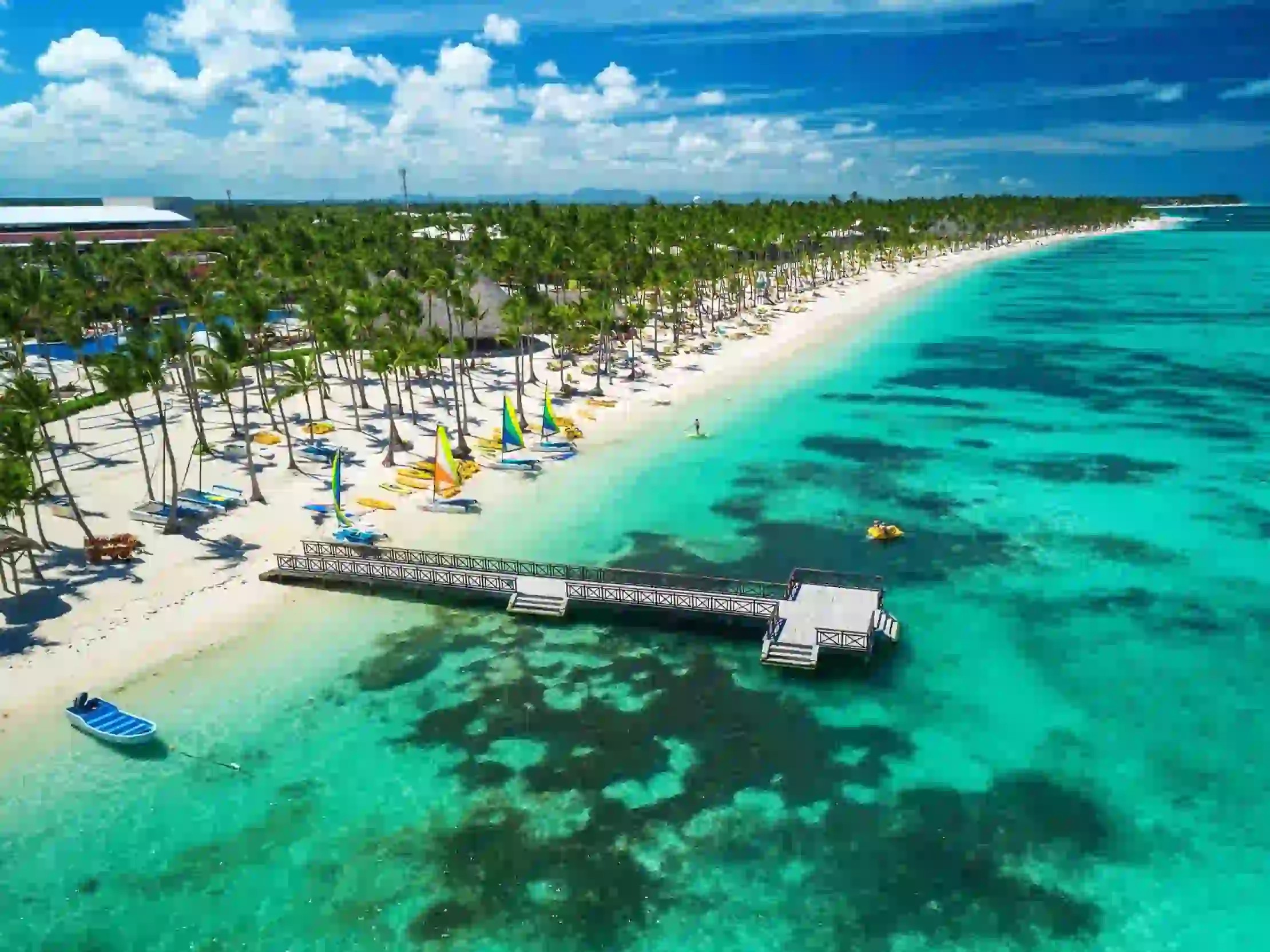
The Dominican Republic is one of the most visited islands in the Caribbean — Punta Cana alone welcomes millions each year. I’ve been there three times, and while the beach resorts are generally safe, the country still ranks among the top 10 most dangerous Caribbean islands in 2025 due to rising crime rates outside tourist zones.
Common Tourist Issues:
- Scams: Fake excursion sellers, rigged taxi fares, and credit card skimming are common.
- Robbery: Petty theft is frequent in Santo Domingo and Santiago.
- Resort Area Safety: While generally safer, theft can still occur if valuables are left unattended.
I once spoke with a hotel manager in Bavaro who confirmed that while incidents are rare, they do happen — especially when guests wander outside resort areas late at night.
Pro Tip: Book excursions through your hotel or trusted tour operators for peace of mind. Avoid flashing expensive items and use discreet bags, like I do with my DSLR, and always stick to official taxis or reliable rideshare apps like InDrive.
| Risk Category | Locations | Local Insight |
| Scams | Santo Domingo, Punta Cana | Verify prices before agreeing to tours or taxis |
| Street Crime | Santiago, Santo Domingo | Travel in groups, avoid isolated areas |
| Resort Theft | Bavaro, Puerto Plata | Use in-room safes and lock balconies |
With awareness, you can still enjoy the Dominican Republic’s beaches, music, and incredible food scene while minimizing risks.
5. Haiti – Political Instability & Safety Warnings
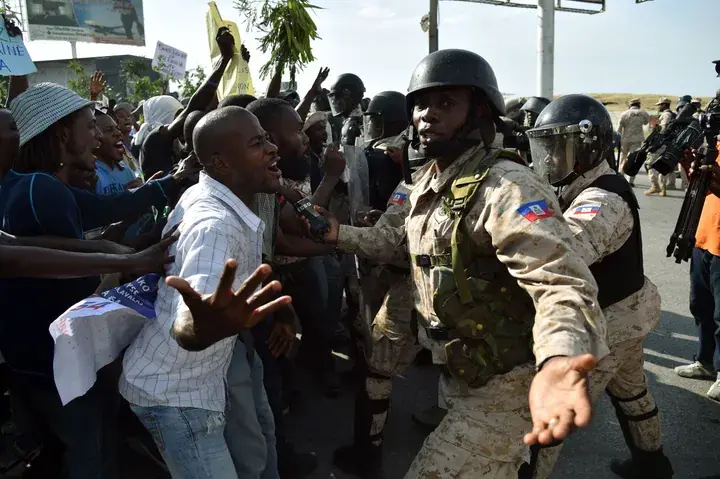
Haiti has always fascinated me — the art scene in Port-au-Prince, the Citadelle Laferrière fortress overlooking the hills, and the rich history of the first Black republic are truly powerful. But today, Haiti is sadly one of the 10 most dangerous Caribbean islands for travelers, and it consistently appears on U.S. Department of State’s Level 4: Do Not Travel advisory list.
Current Challenges:
- Gang-Led Turmoil: Kidnappings, carjackings, and armed robberies have surged, particularly in Port-au-Prince and surrounding areas.
- Political Instability: Protests and roadblocks can erupt without warning, disrupting transport and leaving travelers stranded.
- Humanitarian Crisis: Food shortages, lack of medical infrastructure, and Haitian migrants fleeing to neighboring countries add to the instability.
When I last planned a visit in 2023, I had to cancel after consulting with a Haitian Heritage Association contact who warned that local police stations were overwhelmed.
| Risk Factor | Risk Level | Expert Advice |
| Violent Crime | Very High | Avoid entire Port-au-Prince area unless on official business |
| Road Safety | High | Roadblocks common; always travel with trusted local drivers |
| Health & Medical | Low Availability | Hospitals often lack supplies — travel insurance is essential |
Pro Tip: If you must travel to Haiti, always register with your embassy and hire local security or travel with reputable NGOs. Stock up on essentials like water and medications before arrival to ensure you’re prepared.
For leisure travel, I recommend postponing visits until the security situation improves.
6. Saint Kitts & Nevis – Petty Crime & Resort Risks
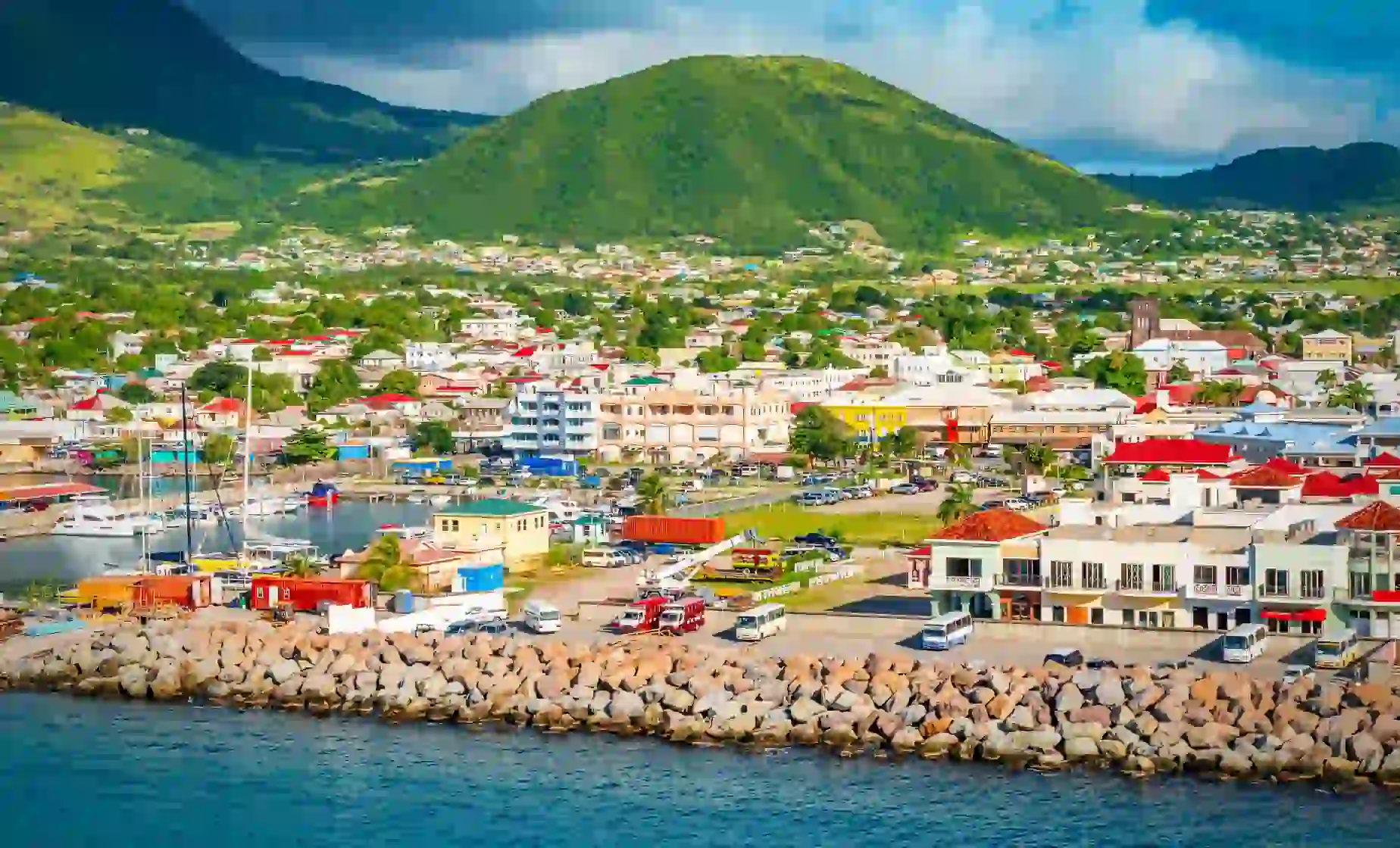
I first visited Saint Kitts during a Caribbean sailing trip, and its charm is undeniable — lush rainforests, Brimstone Hill Fortress, and quiet beaches that feel untouched. But even here, you need to be cautious, as the island has seen a rise in petty crime, especially in Basseterre.
Crime & Safety Concerns:
- Petty Theft: Purse-snatching and hotel-room thefts are the most common issues.
- Car Break-ins: Rental cars are frequent targets near popular beaches.
- Violence: While rare, isolated violent crimes do occur and are often tied to local disputes.
During my stay, my guesthouse host reminded me to keep windows locked and avoid leaving anything in the car when visiting Cockleshell Bay.
| Risk Category | Location | Safety Tip |
| Theft | Basseterre, Frigate Bay | Leave valuables in hotel safe |
| Car Break-Ins | Popular beaches | Keep cars empty & locked |
| Nightlife Incidents | Downtown Basseterre | Stick to well-lit bars & clubs |
Pro Tip:
- Walk with small bills (Eastern Caribbean dollars) — showing large amounts of cash can make you a target.
- Book accommodation in established areas like Frigate Bay for more security presence.
- If you’re docking on a cruise, explore with a group rather than alone.
Even with these risks, Saint Kitts & Nevis remains one of the quieter islands on this top 10 most dangerous Caribbean islands for tourists list — just be aware and plan ahead.
7. The Bahamas – Nassau & Freeport Crime Worries
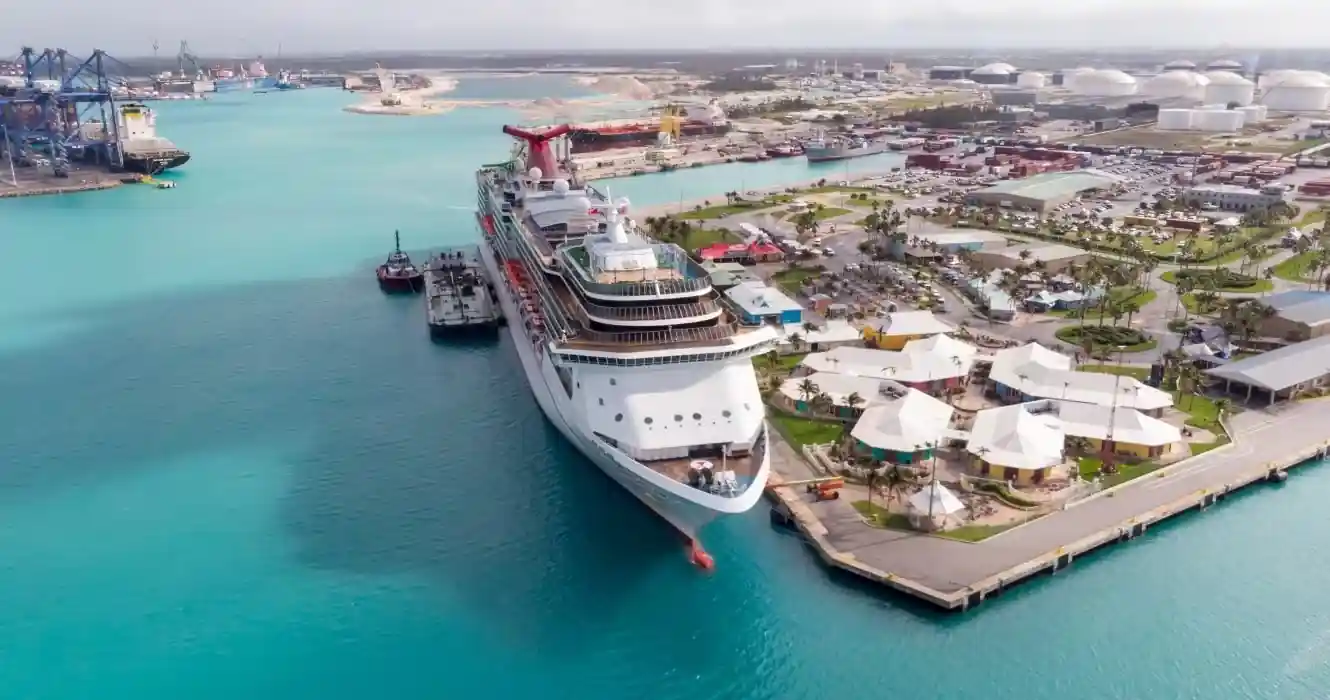
The Bahamas is often marketed as a Caribbean paradise — and I agree, it has some of the best beaches for couples I’ve ever set foot on. But not all of the islands are equally safe. Nassau and Freeport, in particular, rank high on the Caribbean Island Safety Index 2025 for crime rates that affect tourists.
Crime Snapshot:
- Armed Robbery: Especially after dark in Nassau and downtown Freeport.
- Gang-Related Violence: Mostly local disputes, but incidents occasionally spill into tourist areas.
- Tourist Targeting: Cruise ship passengers are common targets for pickpocketing near Prince George Wharf.
During one of my trips, I stayed near Cable Beach, which is generally safer, but even there I kept my doors locked and valuables hidden.
| Risk Factor | Location | Travel Tip |
| Armed Robbery | Downtown Nassau | Avoid walking alone after dark; use hotel shuttles |
| Pickpocketing | Cruise terminals | Keep cash/cards in money belt |
| Drug-Related Crime | Freeport | Avoid buying anything on the street — common tourist scam |
Pro Tip: In Nassau, stick to organized tours booked through your cruise line or resort for added security. Avoid sharing real-time travel plans on social media, and consider staying on out-islands like Exuma or Eleuthera for a safer experience.
Despite these concerns, the Bahamas remains a favorite — just treat Nassau like any major city: stay aware, especially at night.
8. Saint Lucia – Robberies & Tourist Targeting
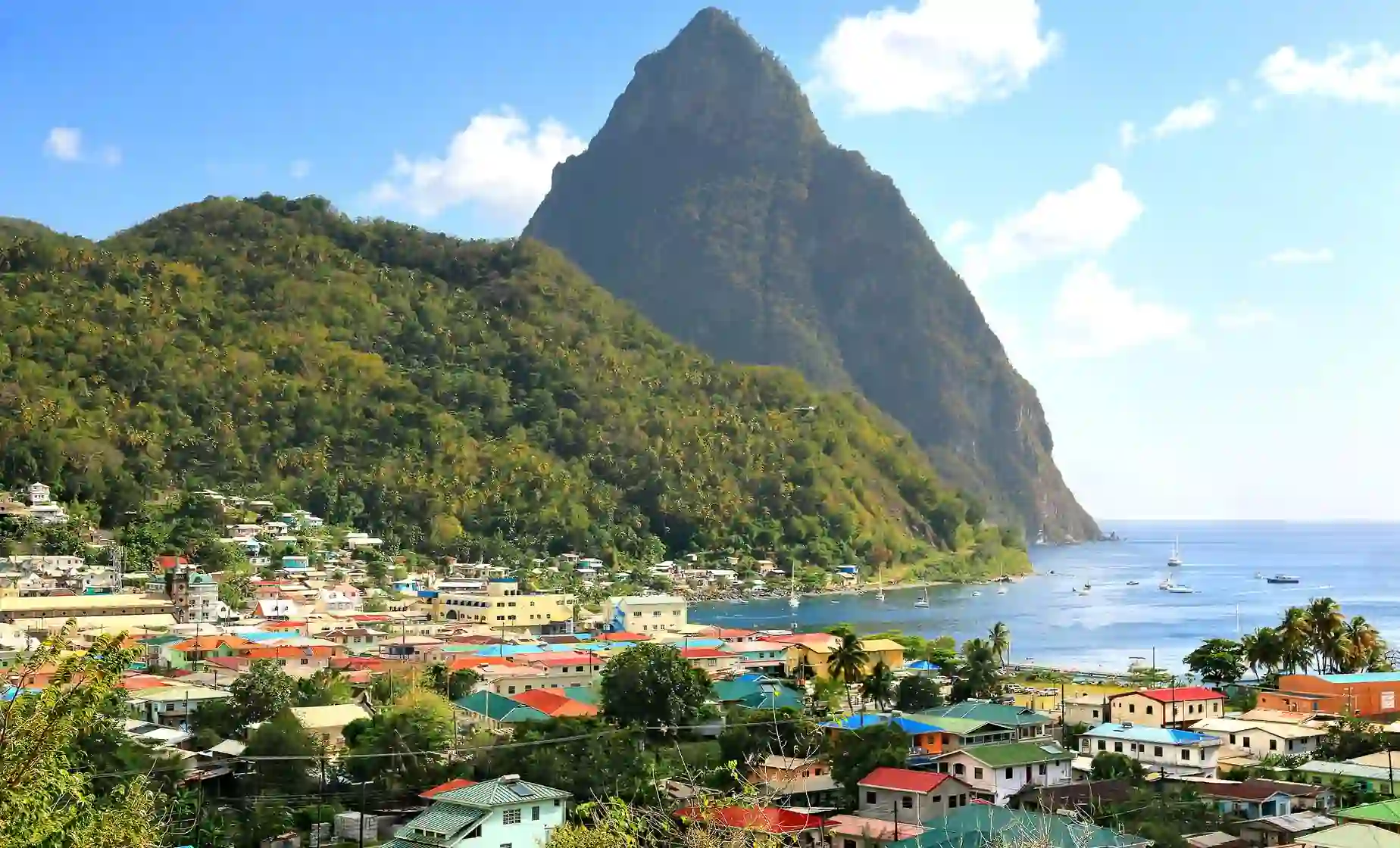
Saint Lucia is one of the most stunning islands I’ve ever visited — the Pitons rising dramatically over the sea, lush rainforests, and quiet fishing villages that feel frozen in time. But even this island paradise has earned its spot among the top 10 most dangerous Caribbean islands for tourists due to occasional violent incidents.
Key Risks:
- Armed Robberies: Especially in Castries and on isolated hiking trails.
- Tourist Targeting: Reports of assaults on hikers near Anse La Raye and Soufrière.
- Petty Theft: Common near crowded beaches and local markets.
I learned a valuable lesson when hiking to Gros Piton — always go with a certified guide. Local guides not only know the terrain but also help deter theft or harassment.
| Risk Level | Hotspots | Safety Measure |
| High | Castries city center, remote trails | Hike with guides, avoid nighttime walks |
| Medium | Rodney Bay nightlife area | Travel in groups, stay in well-lit zones |
| Low | Marigot Bay, Anse Chastanet | Safer, but still watch belongings |
Pro Tip: Hire licensed guides for hikes, avoid leaving bags on the beach, and stay in secure guesthouses or resorts.
Saint Lucia’s beauty is undeniable, and with awareness, you can enjoy the island safely — from Sulphur Springs to iconic sunset cruises.
9. Saint Vincent & the Grenadines – Violent Crime Rising
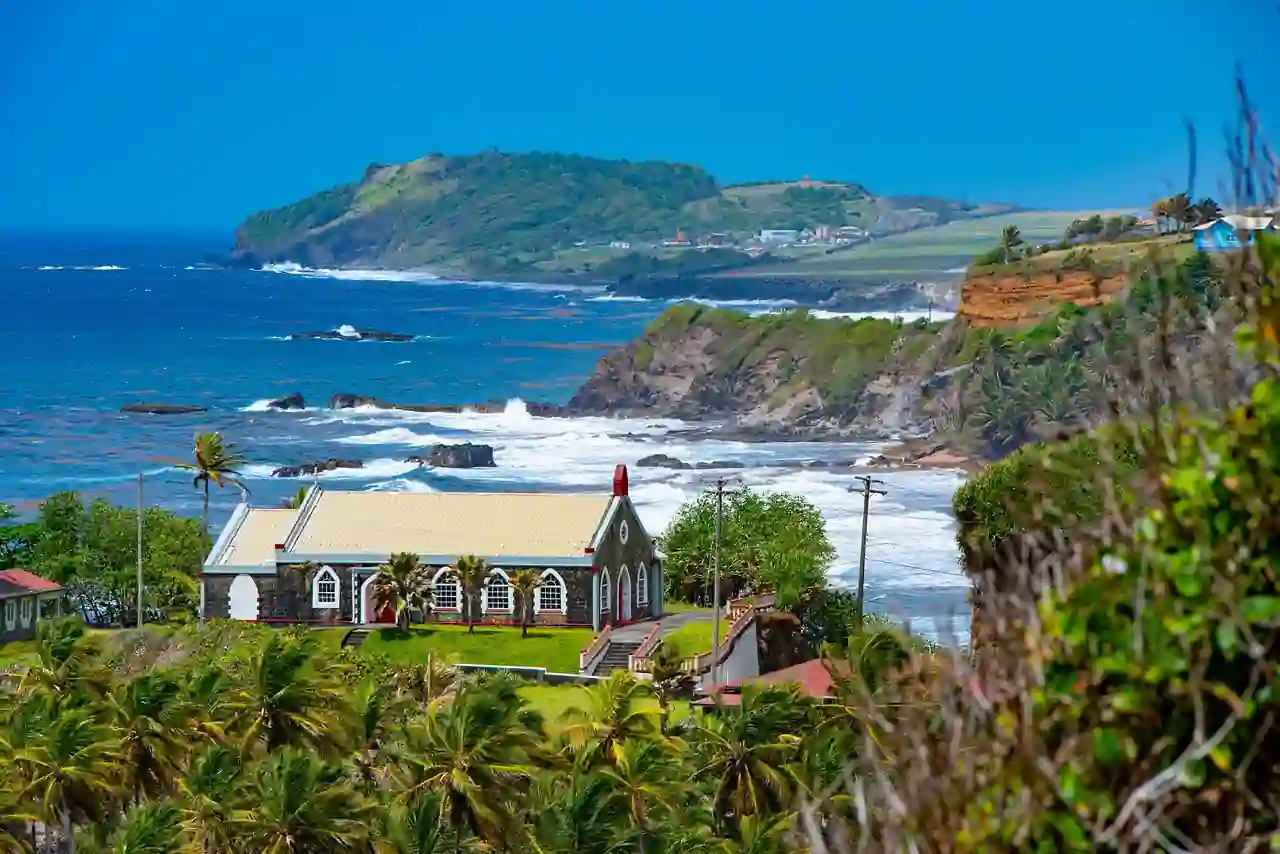
When I first visited Saint Vincent, I was captivated by the volcanic landscape, black-sand beaches, and the laid-back vibe of Bequia and the Grenadines. But over the past few years, crime in Kingstown and nearby areas has increased enough to put this island nation on several top 10 most dangerous Caribbean islands lists.
Safety Challenges:
- Gang-Related Violence: Concentrated in Kingstown and surrounding neighborhoods.
- Armed Robbery & Assaults: Tourists on yachts have reported break-ins and theft while anchored.
- Petty Crime: Bag-snatching and phone theft, especially near markets and ferry terminals.
When I spoke to a local boat captain, he warned me not to leave valuables aboard while docking in Kingstown — theft from boats has been an ongoing problem.
| Risk Category | Locations of Concern | Safety Strategy |
| Violent Crime | Kingstown neighborhoods | Stick to daylight visits, avoid solo walks |
| Yacht/Boat Thefts | Blue Lagoon, Kingstown harbor | Use marina security and lock hatches |
| Petty Theft | Ferry terminals, markets | Keep cash/cards in hidden pockets |
Pro Tip: Sail with marinas offering 24/7 security, avoid isolated areas at night, and consider quieter islands like Canouan or Mayreau for safety.
10. Aruba – Pretty Crime & Scams
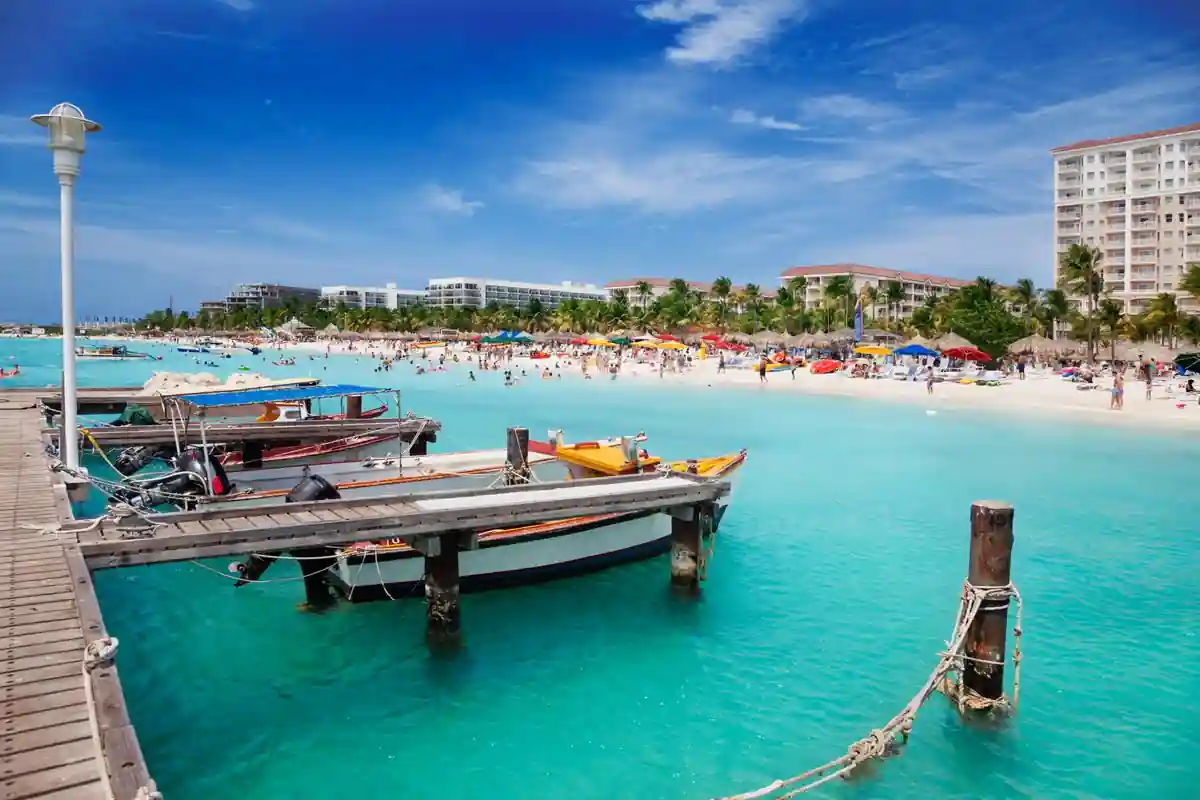
Aruba is often marketed as one of the safest Caribbean destinations — and compared to other islands on this list, it is. But as tourism has grown, so have petty crimes and scams, landing it on the lower end of the top 10 most dangerous Caribbean islands for tourists lists.
Key Risks:
- Petty Theft: Pickpocketing in Oranjestad and crowded beaches like Palm Beach.
- Car Break-Ins: Rental jeeps are often targeted if left with belongings inside.
- Scams: Overpriced taxi fares and fake tour operators sometimes target first-time visitors.
During my last trip, I took a jeep tour to Arikok National Park — the guide warned us to keep the vehicle empty when parked near natural pools.
| Risk Level | Areas Affected | Travel Insight |
| Petty Theft | Palm Beach, Oranjestad | Keep bags close and zipped |
| Scams | Tourist markets, taxi stands | Agree on prices before paying |
| Car Break-Ins | Natural attractions | Take all belongings with you |
Pro Tip: Use government-licensed taxis with “TX” plates, leave passports in hotel safes, and carry a copy when exploring. Visit popular sites early to avoid crowds and theft risks.
Even with these concerns, Aruba is still one of the safer islands in the Caribbean — just don’t let the “One Happy Island” branding lull you into complacency.
Common Crime Patterns Across the Caribbean
If you’re planning a trip and wondering which are the 10 most dangerous Caribbean islands, it helps to understand the bigger picture. The truth is, many of the top 10 most dangerous Caribbean islands for tourists share similar crime patterns. Once you know what to expect, you can travel smarter and safer.
Most Common Threats to Tourists
- Petty Theft & Pickpocketing – Busy markets, public buses, and crowded beaches are hotspots.
- Armed Robbery – Often late at night or in poorly lit areas.
- Tourist Scams – Overpriced taxis, fake tour guides, or counterfeit goods.
- Car Break-Ins – Rental cars are easy targets, especially near remote attractions.
- Gang-Related Violence – Rarely aimed at tourists but can happen nearby.
| Crime Type | Common Locations | Safety Tip |
| Pickpocketing | Cruise ports, markets | Use money belts, carry minimal cash |
| Armed Robbery | City backstreets, beaches at night | Avoid isolated areas after dark |
| Scams | Taxi stands, tourist traps | Agree on prices, book tours through hotels |
| Vehicle Theft | Remote beaches, hiking trails | Remove valuables, park in secure areas |
Pro Tip: Travel with a buddy for nightlife outings, avoid flashing valuables, and keep digital copies of your passport and documents securely online.
Understanding these patterns allows you to approach your trip with realistic expectations rather than fear.
Natural Disasters & Health Risks
Crime isn’t the only danger in the Caribbean — natural disasters and health risks should be part of your trip planning. The region lies in the Atlantic Hurricane Belt, and several islands are prone to earthquakes and volcanic activity.
Natural Hazards to Watch
- Hurricanes: Peak season runs from June to November, with September being the most active month.
- Earthquakes & Volcanoes: Particularly in islands like Dominica, St. Vincent, and Martinique.
- Tropical Storms & Flooding: Can disrupt flights and ferry schedules quickly.
Health Risks for Tourists
- Mosquito-Borne Illnesses: Dengue, Zika, and Chikungunya are present in several islands.
- Food & Water Safety: Stick to bottled water in less-developed areas.
- Limited Healthcare Facilities: Smaller islands may have basic clinics but no trauma centers.
| Risk Type | Islands Most Affected | Traveler Prep |
| Hurricanes | Puerto Rico, Bahamas, Dominica | Buy travel insurance, monitor weather |
| Volcano Activity | St. Vincent, Montserrat | Check local alerts before hiking |
| Mosquito-Borne Illness | Most Caribbean islands | Use repellent, wear light clothing |
| Healthcare Access | Remote islands | Know nearest hospital before arrival |
Pro Tip: Always get travel insurance with medical evacuation coverage, especially for island-hopping or remote spots. Pack a basic first-aid kit, including insect repellent and prescription meds, and check health advisories from the CDC or WHO before you go.
Safety Tips for Tourists Visiting the Caribbean
Even if you’re visiting one of the top 10 most dangerous Caribbean islands for tourists, you can still have an amazing trip with some basic precautions. Over years of traveling through Montego Bay, Port of Spain, and San Juan — often solo — I’ve learned that preparation makes all the difference.
Key Safety Strategies
- Check Official Travel Advisories
- The U.S. Department of State updates advisories regularly. Look for Level 2 (“Exercise Increased Caution”) or higher.
- If you see Level 4: Do Not Travel advisory — think twice before booking.
- The U.S. Department of State updates advisories regularly. Look for Level 2 (“Exercise Increased Caution”) or higher.
- Choose Accommodation Wisely
- Opt for resorts with security personnel or gated boutique hotels.
- Ask locals or staff about areas to avoid before exploring.
- Opt for resorts with security personnel or gated boutique hotels.
- Stay Alert During Nightlife
- Use registered taxis or hotel shuttles after dark.
- Limit alcohol, keep an eye on your drink, and avoid flaunting cash.
- Use registered taxis or hotel shuttles after dark.
- Secure Your Belongings
- Use hotel safes for passports, cash, and credit cards.
- Carry only what you need — leave expensive jewelry at home.
- Use hotel safes for passports, cash, and credit cards.
- Prepare for Emergencies
- Save the local police station number and your country’s embassy contact.
- Have a plan for medical issues, especially on smaller islands with limited healthcare.
- Save the local police station number and your country’s embassy contact.
| Situation | Pro Tip |
| Public Transit | Sit near locals, not isolated at the back. |
| Beach Trips | Don’t leave bags unattended — theft is common. |
| Excursions | Book through verified operators or your hotel concierge. |
| Cash Handling | Use ATMs in well-lit, secure areas (banks > standalone machines). |
Pro Tip:
Always keep digital copies of your passport, visa, and travel insurance policy. If you lose your wallet, having access to these files can save hours of stress at the embassy or police station.
Safer Alternatives: Caribbean Islands with Low Crime
If the idea of visiting the 10 most dangerous Caribbean islands worries you, don’t write off the entire region. Many islands are consistently ranked as safe Caribbean destinations according to the Caribbean Island Safety Index 2025.
Best Low-Crime Caribbean Islands
- Barbados: Known for its friendly locals and calm atmosphere.
- Turks & Caicos Islands: Premier Washington Misick has prioritized tourism safety, with visible police presence around Grace Bay.
- Cayman Islands: Strict laws and well-funded security make these islands a safe haven for families.
- Saint Barts: A luxury destination with extremely low violent crime.
| Island | Safety Level | Why It’s Safe |
| Barbados | High | Strong community policing, tourist-friendly culture |
| Turks & Caicos | High | Visible anti-crime efforts, secure resort zones |
| Cayman Islands | Very High | Low crime rate, reliable emergency services |
| Saint Barts | Very High | Wealthy island, minimal gang presence |
Pro Tip: If you want the Caribbean vibe without major safety concerns, avoid peak hurricane season (late summer) and visit during December–April when the weather is calm and security is well-staffed for tourism.
Final Thoughts
Yes, there are the top 10 most dangerous Caribbean islands where crime rates are high — and I’ve seen those risks up close. I’ve had nights where I had to skip certain neighborhoods because locals warned me about gang clashes, and I’ve had mornings where I strolled peacefully along a beach just a few miles away.
That’s the beauty and challenge of the Caribbean: safety is rarely black and white. If you stay alert, use common sense, and follow local advice, you can enjoy paradise without becoming a statistic.
Remember, the goal isn’t to avoid the Caribbean — it’s to travel informed. This allows you to experience Montego Bay’s reggae culture, explore Puerto Rico’s rainforests, or sail Saint Lucia’s Pitons while staying safe.
People Also Ask(Faq’s)
1. What is the most unsafe Caribbean island?
Haiti currently tops the list of the most dangerous Caribbean islands, with gang-led violence, kidnappings, and ongoing political instability prompting frequent Level 4 “Do Not Travel” advisories.
2. What is the safest Caribbean island?
Barbados, along with the Cayman Islands and Turks & Caicos, consistently rank among the safest Caribbean destinations with low violent crime and strong tourism security measures.
3. What Caribbean island should you not travel to?
Avoid traveling to Haiti right now — U.S. Department of State warnings cite extreme gang activity, roadblocks, and lack of medical infrastructure.
4. What is the poorest Caribbean island in the world?
Haiti is considered the poorest country in the Caribbean, with severe poverty, limited healthcare, and economic struggles impacting overall safety and infrastructure.
5. Which Caribbean country has the lowest crime?
The Cayman Islands have one of the lowest crime rates in the region, making them a top pick for travelers seeking a worry-free Caribbean vacation.
6. Which is safer, Jamaica or the Bahamas?
The Bahamas, particularly islands like Exuma or Eleuthera, generally see lower violent crime rates than Jamaica’s Kingston and Montego Bay, though Nassau still requires caution.
7. Which is the prettiest Caribbean island?
Saint Lucia often takes the crown for its dramatic Piton mountains, lush rainforests, and postcard-perfect beaches — it’s one of the Caribbean’s most photogenic destinations.
8. Why is Aruba so safe?
Aruba’s small population, strong police presence, and tourism-focused economy contribute to its very low violent crime rate, making it one of the safest Caribbean islands.
9. What is the cheapest Caribbean island to visit?
The Dominican Republic is usually the most budget-friendly, with affordable all-inclusive resorts, local eateries, and plenty of inexpensive excursions.
10. When to avoid the Caribbean?
Skip late August through October if possible — this is peak hurricane season in the Caribbean, which can disrupt flights, cruises, and beach plans.





